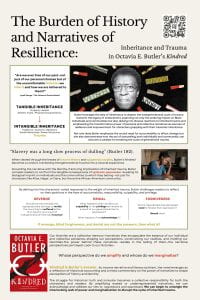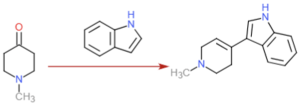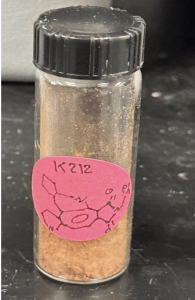RESEARCH IN PSYCHOLOGY
Impostor Syndrome and Diversity: Race, Ethnicity, and Generation
By Alejandra M. Ponce
INTRODUCTION
While high-achieving students are admirable in their efforts and accomplishments, their personal well-being is cause for concern. While one would assume that hard-working academic students acknowledge themselves for the work they accomplish, sometimes students will trudge through their scholastic journeys and accept their accolades with shame, guilt, and/or fear—even after being awarded for their achievements. This phenomenon can be attributed to impostor syndrome, which involves chronic self-doubt and fear of being exposed as a fraud in connection to feelings of incompetence, inadequacy, and an inability to feel self-pride or internalize accomplishments (Bravata et al., 2019; Cokley et al., 2017). Previous research has linked impostor syndrome to emotional and physical exhaustion, generalized anxiety, diminished workplace performance, and even decreased diversity in institutional leadership positions (Bravata et al., 2019; Cokley et al., 2017; Moyer et al., 2021; Rivera et al., 2021). Although research findings recognized that impostor syndrome is common as well as personally and socially detrimental to the individuals experiencing it, there seems to be conflicting evidence about how exactly it affects people, specifically students in universities.
Other factors that have been previously implicated in research on impostor syndrome include general mental health (Bernard et al., 2017; Cokley et al., 2013; Cokley et al., 2017; Cusack et al., 2013), perfectionism (Cusack et al., 2013, Pannhausen et al., 2020; Rohrmann et al., 2016), and self-esteem (Cusack et al., 2013; Ibrahim et al., 2020). Moreover, previous research has suggested complex associations between impostor syndrome and race and ethnicity (Ayesiga, 2022; Bernard et al., 2017; Cokley et al., 2013; Cokley et al., 2017; Jackson et al., 2022) while leaving first-generation student status largely unexplored. Therefore, this study aimed to explore the possible differences in experiences of impostor syndrome in ethnically and racially underrepresented and first-generation students in comparison to represented and continuing-generation students, respectively. In this mixed methods study, potential links between diversity-related variables such as race, ethnicity, and first-generation student status relative to impostor syndrome and other personal variables were investigated.
METHODS
Quantitative Study
Participants
Upon approval from the Institutional Review Board (IRB) at the University of Massachusetts Dartmouth, participants were recruited through physical flyers (see Appendix A) posted around academic buildings on campus, where a quick response (QR) code directed them to the survey on Qualtrics. Data was collected from a sample of 39 participants. 7 of the survey responses were removed from the data analysis due to incomplete responses. Demographic information of the sample (n = 32) is summarized in Table 1. The sample mostly consisted of female (81.3%), White (81.3%) upperclassmen in the College of Arts & Sciences (71.9%) at the University of Massachusetts Dartmouth. Participants were given $10 gift cards upon participation.
Instruments
Demographics. Participants were asked to report demographic information such as their gender assigned at birth, gender identity, age, race, ethnicity, current cumulative grade point average (GPA), major, current year of study, whether they identified as a first-generation student, and the educational levels of their parents or legal guardians. All these variables were suspected, or have shown, to be associated with impostor syndrome.
Impostor Syndrome. Feelings of impostor syndrome among participants were measured using the Clance Impostor Phenomenon Scale (CIPS; Clance & Imes, 1978). The CIPS is a 20-item scale rated on a 5-point Likert scale ranging from 1 (not at all true) to 5 (very true). Sample items include “I can give the impression that I’m more competent than I really am” and “I’m afraid people important to me may find out that I’m not as capable as they think I am.” Total scores on the instrument are summed with final scores between 20-100. Higher scores indicate greater feelings of impostor syndrome. Holmes and colleagues (1993) reported high internal consistency reliability of the scale ( = .96). The scale had an internal consistency of = .93.
General Mental Health. To account for general state of mental well-being, participants completed the Mental Health Inventory-5 (MHI-5; Berwick et al., 1991). A 6-point scale ranging from 1 (all of the time) to 6 (none of the time) is used to measure the 5-item scale. Sample items include “During the past month, how much of the time were you a happy person?” and “How much of the time, during the past month, have you been a very nervous person?” The scale is scored from 0 to 100 (items 1 and 2 are reverse-coded) with a score of 100 indicating excellent mental health. A Cronbach’s alpha of .84 was previously found for the scale (Nearchou et al., 2019), but had a poor internal consistency of = .25.
Perfectionism. The Frost Multidimensional Perfectionism Scale (FMPS; Frost et al., 1990) is a 35-item scale that measures perfectionism on four subscales: concern over mistakes and doubts about actions, concern with parental expectations, high personal standards, and concern with organization. However, a total score was used in this study. Sample items include “My parents set very high standards for me” and “Organization is very important to me.” A 5-point Likert scale ranging from 1 (strongly disagree) to 5 (strongly agree) is used to measure responses, with higher scores indicating higher perfectionistic tendencies. A Cronbach’s alpha of .93 was found for the total scale (Pannhausen et al., 2020). The scale had an internal consistency of = .93.
Self-Esteem. As for self-esteem, the Rosenberg Self-Esteem Scale (RSES; Rosenberg, 1965) was used. The RSES contains 10 items and measures responses with a 4-point Likert scale ranging from 1 (strongly disagree) to 4 (strongly agree). Sample items include “On the whole, I am satisfied with myself” as well as “At times I think I am no good at all.” Scores on the scale are summed and total scores range from 4 to 16 with higher scores indicating higher self-esteem. A Cronbach’s alpha of .84 was previously found for the scale (von Collani & Herzberg, 2003), but had a very poor internal consistency of = .09.
Diversity-Related Stressors. To measure stressors that are generally experienced by the student population as well as those uniquely experienced by students that are underrepresented, the Minority Status Stress Scale (MSSS; Smedley et al., 1993) was used. The MSSS is a 33-item scale utilizing a 6-point Likert scale ranging from 0 (does not apply) to 5 (extremely stressful). There are six subscales: achievement stressors, environmental stressors, race-related stressors, intrapersonal stressors, interpersonal stressors among ethnic minority groups, and interpersonal stressors with White people. Sample items include “The university is an unfriendly place” as well as “Being treated rudely or unfairly because of my race.” Subscale and total scores may be used, but for the purposes of this study, only total scores were used. Total scores on the scale are summed and range from 0 to 185 with higher scores suggesting more feelings of diversity-related stress. Internal consistency of the scale has been reported with a Cronbach’s alpha of .92 (Greer & Chwalisz, 2007). The scale had an internal consistency of = .96.
Qualitative Study
Participants
Upon approval from the IRB at the University of Massachusetts Dartmouth, participants were asked at the end of the Qualtrics survey whether they were willing to take part in the second phase of the research. Participants were given the option to input their school email address as an indication that they were interested in being contacted to schedule an in-person interview. Participants were made aware that agreeing to participate and inputting their school emails would allow the student and primary investigators access to their quantitative survey data, which was used to identify whether the participant met the inclusion criteria for the in-person interviews. Data was collected from a sample of 4 participants, all female, between the ages of 20 and 22. All the participants fit the inclusion criteria, which included identifying as a non-White race, as part of an ethnic group, or as a first-generation student. Each participant was also required to have experienced moderate to intense impostor feelings, according to their CIPS scores (Clance & Imes, 1978). Participants were given $20 gift cards upon participation.
Instruments
In-Person Interviews. A qualitative descriptive design, as explained by Sandelowski (2000) was used for the method. An in-person, responsive interview technique following a conversational guide (Rubin & Rubin, 2012) was conducted. Interviews were 15-30 minutes in duration and were conducted on campus in quiet, private locations. The student researcher completed the interviews. All interviews were audio recorded using Zoom, so than an electronic transcript could be prepared later on. Only voices were heard, and no images were recorded of the student researcher or conversational partner. Questions on the interview guide included general, open-ended inquiries about impostor syndrome as experienced by the individual (see Appendix B).
RESULTS
Quantitative Study
Spearman’s rho correlations were conducted to analyze potential relationships between study variables, as illustrated in Table 2. No correlations were found relating to race. As for ethnicity, no significant correlations were found with regards to the personal variables analyzed such as impostor syndrome, mental health, perfectionism, self-esteem, and diversity-related stressors. However, significant correlations were found for impostor syndrome and low self-esteem (r = -.36, p = .045), and impostor syndrome and perfectionism (r = .65, p < .001). No other significant correlations among the personal variables were observed.
A hierarchical multiple regression analysis showed that model 1: first-generation student status and ethnicity (step 1) explained 4% of the variance but was nonsignificant. Entry of personal variables, such as perfectionism, mental health, self-esteem, and diversity-related stress added a significant amount of variance to the model, explaining 55% of the variance, More specifically, perfectionism was the only significant factor ( = .60, p < .001). The hierarchical multiple regression analysis for the variables of interest is displayed in Table 3.
Table 1: Demographic information of the sample (n = 32).
| Variable | Mean | SD | n | % |
| Age (years) | 22.1 | 6.48 | ||
| GPA | 3.30 | 0.782 | ||
| Gender Assigned at Birth
Female Male |
|
28 4 |
87.5 12.5 |
|
| Gender Identity
Female Male Prefer not to say |
26 5 1 |
81.3 15.6 3.1 |
||
| Race
American Indian or Alaska Native Asian Black or African American Native Hawaiian or Pacific Islander White or Caucasian Other |
|
1 1 5 1 26 1 |
3.1 3.1 15.6 3.1 81.3 3.1 |
|
| Ethnicity
Hispanic or Latino or Spanish Origin Not Hispanic or Latino or Spanish Origin |
4 28 |
12.5 87.5 |
||
| First-Generation Student
Yes No |
11 21 |
34.4 65.6 |
||
| Parent or Legal Guardian Education Level
Less than College Some College or More |
25 39 |
39.1 60.9 |
||
| Major
Charlton College of Business College of Arts and Sciences College of Engineering College of Nursing & Health Sciences College of Visual & Performing Arts |
2 23 3 3 1 |
6.2 71.9 9.3 9.3 3.1 |
||
| Year
Freshman (1st year) Sophomore (2nd year) Junior (3rd year) Senior (4th year) |
2 8 13 9 |
6.3 25.0 40.6 28.1 |
Table 2: Correlations between race, ethnicity, personal variables, and diversity-related stressors (n = 32).
| Variables | 1 | 2 | 3 | 4 | 5 | 6 | 7 |
| 1. Race | – | ||||||
| 2. Ethnicity | – | – | |||||
| 3. Impostor Syndrome | – | .18 | – | ||||
| 4.Perfectionism | – | -.31 | .65** | – | |||
| 5. Self-Esteem | – | -.22 | -.36* | -.21 | – | ||
| 6.Diversity-Related Stressors | – | -.25 | -.05 | .11 | -.21 | – | |
| 7.Mental Health | – | -.13 | -.29 | -.16 | .53 | .30 | – |
| Key: ** p < .001, * p < .05 |
Table 3: Hierarchical multiple regression analysis for demographic and personal variables influencing impostor syndrome (n = 32).
| Step and Predictor Variable | B | SE B | Beta | R2 | R2 |
| Step 1:
Demographic Variables |
.04 | ||||
| First-Generation Studenta | 2.48 | 6.17 | .08 | ||
| Ethnicityb | 7.63 | 8.89 | .16 | ||
| Step 2:
Personal Variables |
.55 | .52 | |||
| Perfectionism | .44 | .10 | .60*** | ||
| Mental Health | -1.54 | .91 | -.27 | ||
| Self-Esteem | -.71 | .87 | -.13 | ||
| Diversity-Related Stressors | .02 | .09 | .04 |
| Note. *** p < .001
a Coded: 0 = yes, 1 = no b Coded: 0 = Hispanic, Latino, Spanish origin, 1 = not Hispanic, Latino, Spanish origin |
Qualitative Study
Transcripts underwent inductive content analysis. Individual transcripts were reviewed for relevant segments that were coded based on study aims. Coded segments were entered into an excel file, collapsed into categories, and finally into representative themes. Any quotations from participants used in the results and discussion were presented anonymously.
The participants reported experiencing impostor syndrome mostly at school, and in some cases, at work, particularly when put into leadership roles. Participants described impostor syndrome related to academic pursuits as feeling like they are “not good enough.” They also reported “feeling like [they] didn’t belong there,” especially in regard to science, technology, engineering, and mathematics (STEM) majors and the Honors College. One participant reported changing majors, and another reported dropping out of the Honors program altogether due to severe feelings of impostor syndrome. They both described that the feelings of impostor syndrome “didn’t allow [them] to continue” in either major or program.
Moreover, in both student and work roles, participants described having chronic, significant self-doubt and engaged in negative self-talk. In most cases, the participants’ family members, supervisors, and professors believed in the ability of the participant more than the participants believed in their own abilities. Some contributing factors to feelings of impostor syndrome, as reported by the participants, included being a first-generation college student, experiencing parental pressure to achieve, and competition with siblings. These contributing factors appeared to promote more negative self-talk, including statements like “I feel like I am not as smart as my siblings.”
When receiving awards and accolades, all participants reported discomfort and claimed feeling like “[they] didn’t deserve it” and “didn’t want to sound like [they] have a big ego.” One participant reported that she hides her awards under her bed rather than displaying them.
All participants described themselves as being kind, caring, and giving individuals with more introverted personality types and perfectionistic tendencies. Interestingly, despite their feelings of impostor syndrome, all participants also reported moderate to moderately high self-esteem.
Lastly, when asked whether their feelings of impostor syndrome progressed over the years, participants reported decreased feelings of impostor syndrome. They attributed their lessened feelings of impostor syndrome with increased self-assurance facilitated by faculty, therapists, and friends. Religious and spiritual faith also seemed to be a protective factor against feelings of impostor syndrome.
Discussion
Research investigating impostor syndrome and its manifestation and influence in underrepresented groups are often complex and inconclusive (Cokley et al., 2013; Cokley et al., 2017), especially when also considering more personal variables, such as perfectionism and self-esteem (Cusack et al., 2013; Ibrahim et al., 2020; Pannhausen et al., 2020; Rohrmann et al., 2016). This study investigated the potential relationship between impostor syndrome and diverse social identifiers such as race, ethnicity, and first-generation status, and how it manifests in the experience of impostor feelings. The study was also concerned with determining predictors of impostor syndrome. It was hypothesized that underrepresented and first-generation students would experience impostor syndrome more severely than majority and continuing-generation students as a product of interpersonal and environmental stressors that may come with identifying as a non-White race, being part of an ethnic group, or being a first-generation student. It was also hypothesized that those variables would serve as predictors of impostor syndrome. It was observed, however, that students experienced impostor syndrome similarly across the board, with no notable difference in the manner in which underrepresented and first-generation students experienced impostor syndrome. It was also observed that identifying as a non-White race, as part of an ethnic group, or as a first-generation student were not effective predictors of impostor syndrome. Instead, a significant positive relationship was found for impostor syndrome and perfectionism, and a significant negative relationship was found for impostor syndrome and self-esteem. As for predictors, only perfectionism was shown to be a significant predictor of impostor syndrome.
Correspondence with Prior Research
Aligned with prior research investigating the variables of perfectionism and self-esteem in relation to impostor syndrome, this study also found evidence of a significant positive relationship between impostor syndrome and perfectionism (Cusack et al., 2013; Pannhausen et al., 2020; Rohrmann et al., 2016). As for the variable of self-esteem, this study was able to find a significant negative correlation for impostor syndrome and self-esteem, which supports findings in some prior research (Pannhausen et al., 2020; Rohrmann et al., 2016), but opposes other studies that did not find a significant relationship between impostor syndrome and self-esteem (Cusack et al., 2013), or only found a significant relationship between self-esteem and a specific aspect of impostor syndrome rather than with the concept as a whole (Ibrahim et al., 2020).
As for the variables that yielded nonsignificant results, this study was unable to find a significant correlation between impostor syndrome and mental health that has previously been found in other studies (Cokley et al., 2013; Cusack et al., 2013). While other studies have revealed correlations between minority status stress and impostor syndrome (Cokley et al., 2013), as well as evidence of influences of impostor syndrome on ethnic minority students (Cokley et al., 2017), none of the findings in this study yielded significant correlations between impostor syndrome and race or impostor syndrome and ethnicity.
Considering the resulting themes of the qualitative interviews, the findings of this study resembled findings of prior qualitative studies (Ayesiga, 2022; Jackson et al., 2022). Primarily, feelings of invalidation and not belonging were echoed in the interviews in this study. However, themes involving race or ethnicity were not overarching themes. If mentioned, they were only mentioned briefly.
Potential Mechanisms
Although not a major focus of this study, perfectionism was found to be significantly, positively correlated with impostor syndrome. As the concept of impostor syndrome heavily focuses on aspects of inadequacy and incompetence, it is logical that perfectionism would be related to impostor syndrome. Whether as a means of compensating or as a means of disguising oneself, it is possible that people experiencing impostor syndrome will develop perfectionistic tendencies as a way of managing their impostor feelings. The opposite may be true as well. It may be that people who develop excessive perfectionistic tendencies succumb to feelings of impostor syndrome as a result of always needing everything to be perfect and the impossibility of a perfect outcome. Regardless, perfectionism is often one of the factors contributing to student success because of their self-discipline, attention to detail, and organizational qualities. Thus, perfectionism may perpetuate a cycle with impostor syndrome, where the higher the perfectionistic tendencies are, the more likely people are to become wary of their success, and the more fearful people are of being discovered as a fraud, the more they become perfectionists to presumably avoid being exposed.
Furthermore, perfectionism was also found to be an independent predictor of impostor syndrome. This suggests that higher perfectionistic tendencies may become maladaptive to the individual, and thus create significant dissatisfaction with the self, followed by feelings of unworthiness and insufficiency—both of which are significant aspects of impostor syndrome. As mentioned before, as perfectionism and perfectionistic tendencies are often contributors to student success, this also suggests that there may be an optimal level of perfectionism, and any higher than the optimal level may contribute to feelings of impostor syndrome and become detrimental to the individual.
Moreover, as impostor syndrome is conducive to negative feelings of the self, including feelings of unworthiness, it is almost intuitive that self-esteem would be negatively impacted, despite prior research not finding consistently significant correlations between impostor syndrome and self-esteem. However, this significant finding needs to be taken with a grain of salt. The scale used to measure the general mental health of the participants yielded a poor value of internal consistency in the study. As such, the validity of the significant finding is compromised and requires further evaluation.
Unexpected Results
It was expected that significant correlations between impostor syndrome and race, ethnicity, and first-generation status would occur, as well as some evidence that these variables can act as predictors of impostor syndrome. However, that was not the case. None of these variables yielded significant results. This may be for several reasons. Primarily, it is possible that the demographic composition of the sample was not diverse enough to detect any differences in impostor syndrome between races or ethnicities. As the sample of the quantitative data was 81.3% White (Table 1), it is highly likely that the sample lacked the representation it needed in order to find significant findings for factors of race and ethnicity. Not to mention, only 34.4% of the participants were first-generation students, and thus may have also affected the results of the study.
However, the participants in the qualitative study, all of whom were either or both Black and Hispanic, also placed little importance on the role of their race or ethnicity in its contribution to their feelings of impostor syndrome. As such, it is possible that the demographic composition of the University of Massachusetts Dartmouth affected the environmental stressors that come with identifying as a non-White race, as part of an ethnic group, or as a first-generation student, which then affected the results of the study. Prior research on these variables has been conducted with samples of students in predominately White universities with very little diversity, whereas the University of Massachusetts Dartmouth often prides itself on its diverse student body (UMass Dartmouth, 2023). As such, it is possible that the environment on campus does not produce feelings of hypervisibility in terms of race (Jackson et al., 2022) or perhaps students on campus do not face as many instances of discrimination relative to other students in predominately White universities (Cokley et al., 2013), which may neutralize factors of race, ethnicity, or first-generation status when considering variables related to impostor syndrome.
Furthermore, although general mental health was not a variable that was heavily focused on, it was expected that it would yield a significant, negative correlation with impostor syndrome. However, a nonsignificant correlation was found (Table 2), opposing previous research (Cokley et al., 2013; Cusack et al., 2013). This may be due to the poor internal consistency of the scale used ( = .25.) and the small sample size employed for the statistical analyses.
Limitations
As the current study was conducted with very small sample sizes, the samples are likely not representative of the larger population, and thus bring to question the results that would come from larger sample sizes. In addition to sample size, it is important to consider that the sample in the quantitative study was predominately White (81.3%; Table 1), which may have also skewed the results, as other races and ethnicities may not have been adequately represented. Moreover, the quantitative study was conducted via a survey online and the qualitative survey was conducted in person with the interviews recorded on Zoom. It is possible that the results of the study were skewed by self-report bias, as participants may be unwilling to report or be unaware of the true values of the variables the study was measuring. Correspondingly, the results may also be impacted by social desirability bias, in which the participants enhance the portrayal of themselves. Especially considering most of the sample in this study had moderate to intense feelings of impostor syndrome, it is not unlikely that they would skew their responses in order to keep up with appearances and not expose themselves as frauds, as is crucial to the experience of impostor syndrome.
Implications and Future Directions
The results of the current study suggest that perfectionism is both correlated and is an independent predictor of impostor syndrome, while other variables related to diversity, such as race, ethnicity, and first-generation status are not. Future studies should attempt to replicate this study using larger and more diverse sample sizes to reconsider the potential links between diversity-related variables and impostor syndrome. In addition, more research should be conducted on this almost unanimous correlation found between impostor syndrome and perfectionism, as perfectionism may be a viable path to understanding the mechanism of impostor syndrome and can even potentially be used to screen people for impostor syndrome. These studies may also be used to develop interventions that will decrease harmful perfectionistic tendencies and, in turn, hopefully decrease impostor feelings. Additionally, future researchers should also explore the long-term implications of these elevated levels of perfectionism and impostor syndrome.
References
Ayesiga, Y. T. (2022). “Do I even belong here?: An Examination of Impostor Phenomenon among First-generation College Seniors and the Perceived Factors that Contribute to Resilience and Persistence on the Journey to Graduation” (dissertation). ProQuest Dissertations Publishing, Ann Arbor, MI.
Bernard, D. L., Lige, Q. M., Willis, H. A., Sosoo, E. E., & Neblett, E. W. (2017). “Impostor Phenomenon and Mental Health: The influence of racial discrimination and gender.” Journal of Counseling Psychology, 64(2), 155–166. https://doi.org/10.1037/cou0000197
Berwick, D. M., Murphy, J. M., Goldman, P. A., Ware, J. E., Barsky, A. J., & Weinstein, M. C. (1991). “Performance of a Five-item Mental Health Screening Test.” Medical Care, 29(2), 169–176. https://doi.org/10.1097/00005650-199102000-00008
Bravata, D. M., Watts, S. A., Keefer, A. L., Madhusudhan, D. K., Taylor, K. T., Clark, D. M., Nelson, R. S., Cokley, K. O., & Hagg, H. K. (2019). “Prevalence, Predictors, and Treatment of Impostor Syndrome: A Systematic Review.” Journal of General Internal Medicine, 35(4), 1252–1275. https://doi.org/10.1007/s11606-019-05364-1
Clance, P. R., & Imes, S. A. (1978). “The Imposter Phenomenon in High Achieving Women: Dynamics and Therapeutic Intervention.” Psychotherapy: Theory, Research & Practice, 15(3), 241–247. https://doi.org/10.1037/h0086006
Cokley, K., McClain, S., Enciso, A., & Martinez, M. (2013). “An Examination of the Impact of Minority Status Stress and Impostor Feelings on the Mental Health of Diverse Ethnic Minority College Students.” Journal of Multicultural Counseling and Development, 41(2), 82–95. https://doi.org/10.1002/j.2161-1912.2013.00029.x
Cokley, K., Smith, L., Bernard, D., Hurst, A., Jackson, S., Stone, S., Awosogba, O., Saucer, C., Bailey, M., & Roberts, D. (2017). “Impostor Deelings as a Moderator and Mediator of the Relationship between Perceived Discrimination and Mental Health among Racial/ethnic Minority College Students.” Journal of Counseling Psychology, 64(2), 141–154. https://doi.org/10.1037/cou0000198
Cusack, C. E., Hughes, J. L., & Nuhu, N. (2013). “Connecting Gender and Mental Health to Imposter Phenomenon Feelings.” Psi Chi Journal of Psychological Research, 18(2), 74–81. https://doi.org/10.24839/2164-8204.jn18.2.74
Dartmouth, University of Massachusetts. (2023). Fast facts. UMass Dartmouth. https://www.umassd.edu/about/facts/
Frost, R. O., Marten, P., Lahart, C., & Rosenblate, R. (1990). “The Dimensions of Perfectionism.” Cognitive Therapy and Research, 14(5), 449–468. https://doi.org/10.1007/bf01172967
Greer, T. M., & Chwalisz, K. (2007). “Minority-related Stressors and Coping Processes among African American College Students.” Journal of College Student Development, 48(4), 388–404. https://doi.org/10.1353/csd.2007.0037
Holmes, S. W., Kertay, L., Adamson, L. B., Holland, C. L., & Clance, P. R. (1993). “Measuring the Impostor Phenomenon: A Comparison of Clance’s IP Scale and Harvey’s I-P Scale.” Journal of Personality Assessment, 60(1), 48–59. https://doi.org/10.1207/s15327752jpa6001_3
Ibrahim, F., Münscher, J.-C., & Herzberg, P. Y. (2020). “The Facets of an Impostor – Development and Validation of the Impostor-profile (IPP31) for Measuring Impostor Phenomenon.” Current Psychology, 41(6), 3916–3927. https://doi.org/10.1007/s12144-020-00895-x
Jackson, A., Colson-Fearon, B., & Versey, H. S. (2022). “Managing Intersectional Invisibility and Hypervisibility during the Transition to College among First-generation Women of Color.” Psychology of Women Quarterly, 46(3), 354–371. https://doi.org/10.1177/03616843221106087
Moyer, L. P., Szmer, J., Haire, S., & Christensen, R. K. (2021). “‘All eyes are on you’: Gender, Race, and Opinion Writing on the US Courts of Appeals.” Law & Society Review, 55(3), 452–472. https://doi.org/10.1111/lasr.12559
Nearchou, F., D’Alton, P., Donnelly, A., O’Driscoll, L., O’Flanagan, S., & Kirby, B. (2019). “Validation and Psychometric Evaluation of a Brief Screening Questionnaire for Psychological Distress in Patients with Psoriasis.” Journal of the European Academy of Dermatology and Venereology, 33(7), 1325–1330. https://doi.org/10.1111/jdv.15612
Pannhausen, S., Klug, K., & Rohrmann, S. (2020). “Never Good Enough: The Relation between the Impostor Phenomenon and Multidimensional Perfectionism.” Current Psychology, 41(2), 888–901. https://doi.org/10.1007/s12144-020-00613-7
Rivera, N., Feldman, E. A., Augustin, D. A., Caceres, W., Gans, H. A., & Blankenburg, R. (2021). “Do I belong Here? Confronting Imposter Syndrome at an Individual, Peer, and Institutional Level in Health Professionals.” MedEdPORTAL. https://doi.org/10.15766/mep_2374-8265.11166
Rohrmann, S., Bechtoldt, M. N., & Leonhardt, M. (2016). “Validation of the Impostor Phenomenon Among Managers.” Frontiers in Psychology, 7. https://doi.org/10.3389/fpsyg.2016.00821
Rosenberg, M. (1965). Society and the Adolescent Self-Image. https://doi.org/10.1515/9781400876136
Rubin, H. J., & Rubin, I. S. (2012). Qualitative interviewing: The Art of Hearing Data (3rd ed.). SAGE Publications.
Sandelowski, M. (2000). “Whatever Happened to Qualitative Description?” Research in Nursing & Health, 23(4), 334–340. https://doi.org/10.1002/1098-240x(200008)23:4<334::aid-nur9>3.0.co;2-g
Smedley, B. D., Myers, H. F., & Harrell, S. P. (1993). “Minority-status Stresses and the College Adjustment of Ethnic Minority Freshmen.” The Journal of Higher Education, 64(4), 434. https://doi.org/10.2307/2960051
von Collani, G., & Herzberg, P. Y. (2003). “Eine revidierte Fassung der deutschsprachigen skala zum selbstwertgefühl von rosenberg.” Zeitschrift Für Differentielle Und Diagnostische Psychologie, 24(1), 3–7. https://doi.org/10.1024//0170-1789.24.1.3
| Appendix A |

| Appendix B |






























